Bar Plots - R Base Graphs
Previously, we described the essentials of R programming and provided quick start guides for importing data into R.
Pleleminary tasks
Launch RStudio as described here: Running RStudio and setting up your working directory
Prepare your data as described here: Best practices for preparing your data and save it in an external .txt tab or .csv files
Import your data into R as described here: Fast reading of data from txt|csv files into R: readr package.
Here, we’ll use the R built-in VADeaths data set.
Data set: VADeaths
# Data set
VADeaths## Rural Male Rural Female Urban Male Urban Female
## 50-54 11.7 8.7 15.4 8.4
## 55-59 18.1 11.7 24.3 13.6
## 60-64 26.9 20.3 37.0 19.3
## 65-69 41.0 30.9 54.6 35.1
## 70-74 66.0 54.3 71.1 50.0# Subset
x <- VADeaths[1:3, "Rural Male"]
x## 50-54 55-59 60-64
## 11.7 18.1 26.9Basic bar plots
# Bar plot of one variable
barplot(x)
# Horizontal bar plot
barplot(x, horiz = TRUE)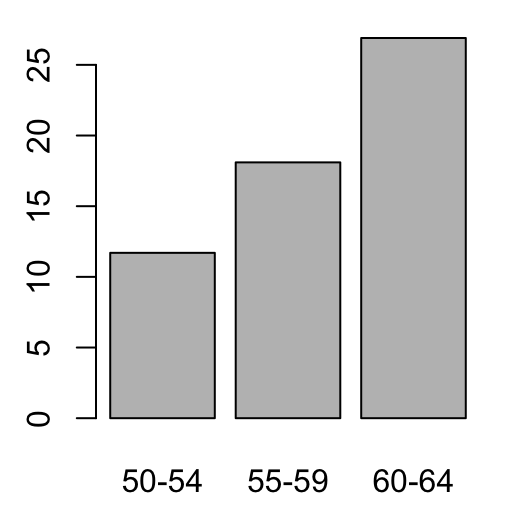
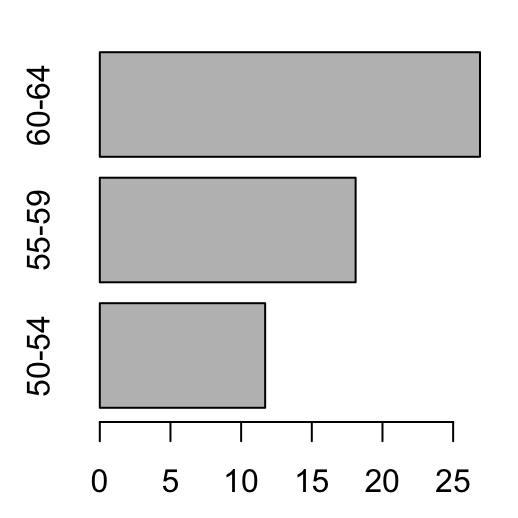
Change group names
barplot(x, names.arg = c("A", "B", "C"))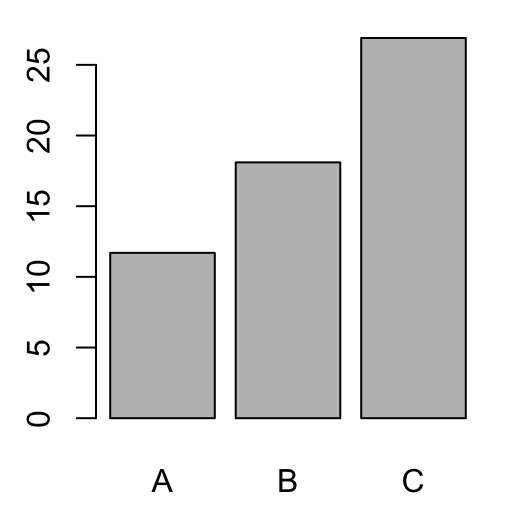
Change color
# Change border and fill color using one single color
barplot(x, col = "white", border = "steelblue")
# Change the color of border.
# Use different colors for each group
barplot(x, col = "white",
border = c("#999999", "#E69F00", "#56B4E9"))
# Change fill color : single color
barplot(x, col = "steelblue")
# Change fill color: multiple colors
barplot(x, col = c("#999999", "#E69F00", "#56B4E9"))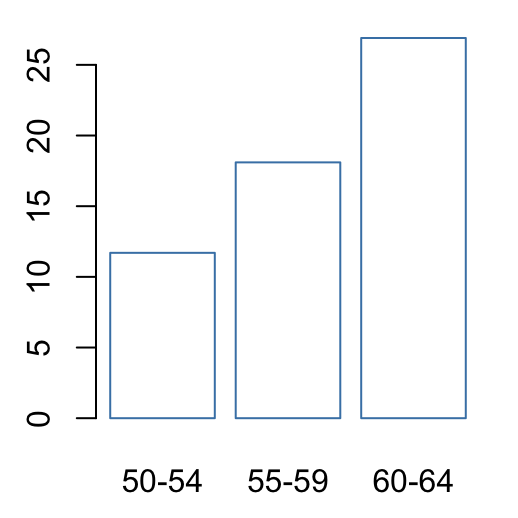
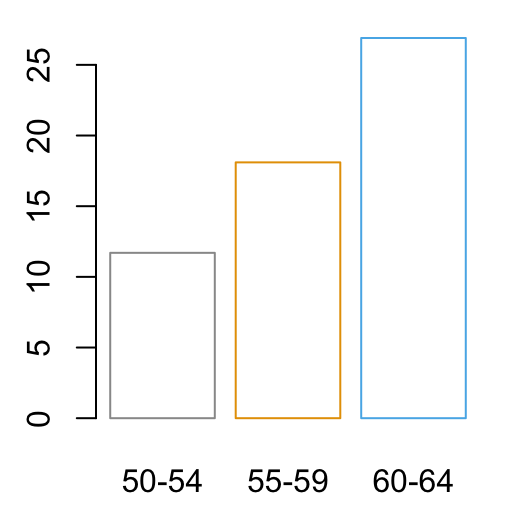
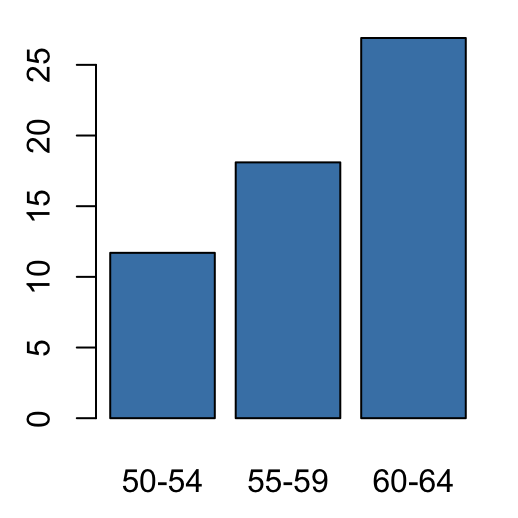
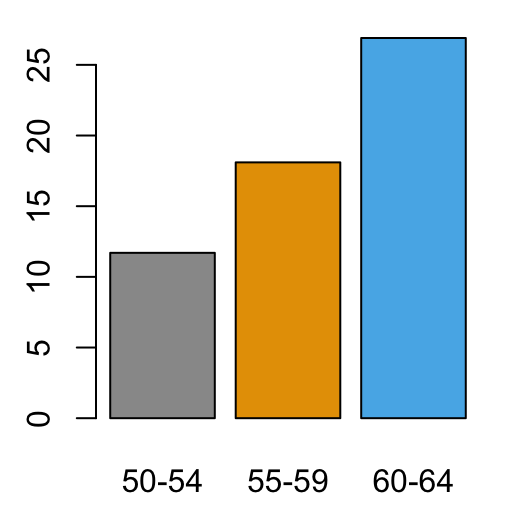
Change main title and axis labels
# Change axis titles
# Change color (col = "gray") and remove frame
barplot(x, main = "Death Rates in Virginia",
xlab = "Age", ylab = "Rate")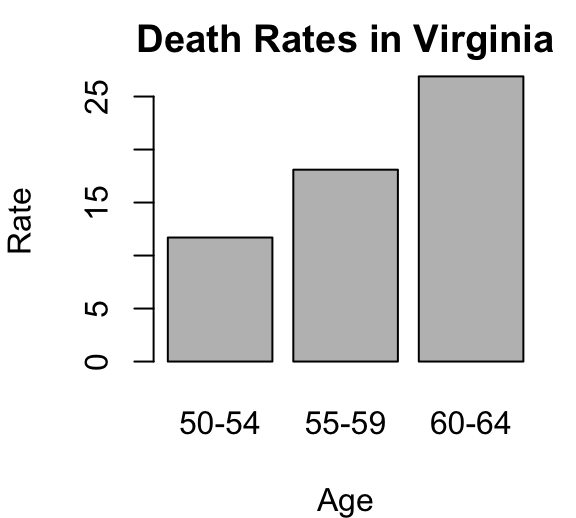
Stacked bar plots
barplot(VADeaths,
col = c("lightblue", "mistyrose", "lightcyan",
"lavender", "cornsilk"),
legend = rownames(VADeaths))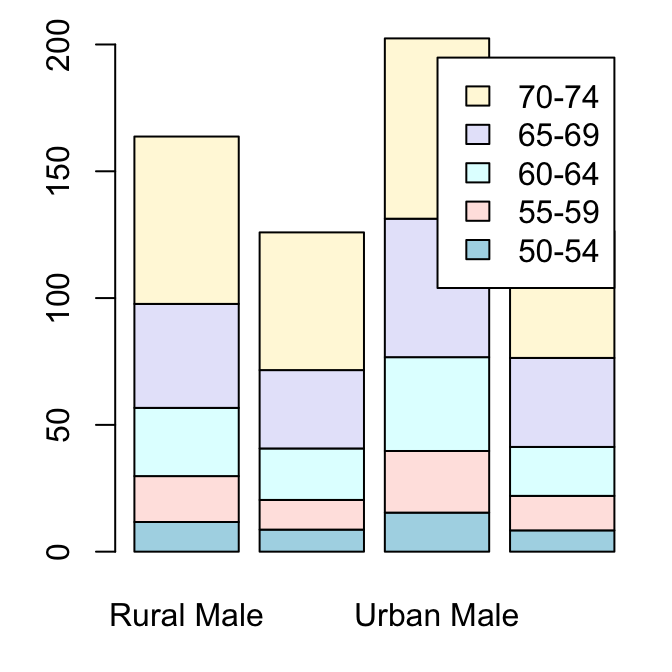
Grouped bar plots
barplot(VADeaths,
col = c("lightblue", "mistyrose", "lightcyan",
"lavender", "cornsilk"),
legend = rownames(VADeaths), beside = TRUE)
It’s also possible to add legends to a plot using the function legend() as follow.
# Define a set of colors
my_colors <- c("lightblue", "mistyrose", "lightcyan",
"lavender", "cornsilk")
# Bar plot
barplot(VADeaths, col = my_colors, beside = TRUE)
# Add legend
legend("topleft", legend = rownames(VADeaths),
fill = my_colors, box.lty = 0, cex = 0.8)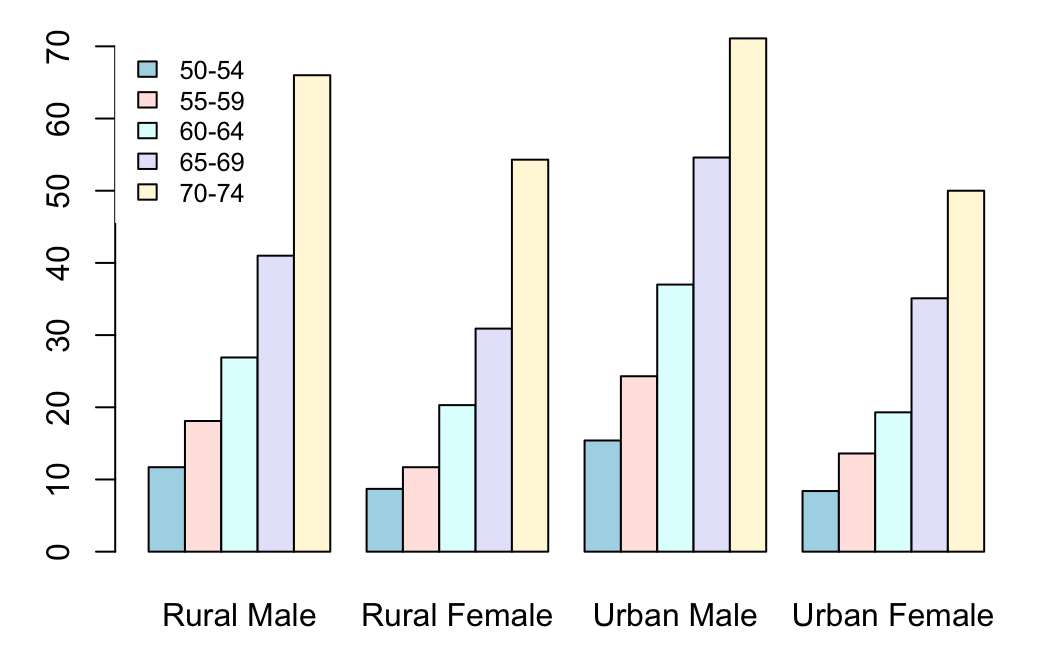
- box.lty = 0: Remove the box around the legend
- cex = 0.8: legend text size
See also
Infos
This analysis has been performed using R statistical software (ver. 3.2.4).
Show me some love with the like buttons below... Thank you and please don't forget to share and comment below!!
Montrez-moi un peu d'amour avec les like ci-dessous ... Merci et n'oubliez pas, s'il vous plaît, de partager et de commenter ci-dessous!
Recommended for You!
Recommended for you
This section contains the best data science and self-development resources to help you on your path.
Books - Data Science
Our Books
- Practical Guide to Cluster Analysis in R by A. Kassambara (Datanovia)
- Practical Guide To Principal Component Methods in R by A. Kassambara (Datanovia)
- Machine Learning Essentials: Practical Guide in R by A. Kassambara (Datanovia)
- R Graphics Essentials for Great Data Visualization by A. Kassambara (Datanovia)
- GGPlot2 Essentials for Great Data Visualization in R by A. Kassambara (Datanovia)
- Network Analysis and Visualization in R by A. Kassambara (Datanovia)
- Practical Statistics in R for Comparing Groups: Numerical Variables by A. Kassambara (Datanovia)
- Inter-Rater Reliability Essentials: Practical Guide in R by A. Kassambara (Datanovia)
Others
- R for Data Science: Import, Tidy, Transform, Visualize, and Model Data by Hadley Wickham & Garrett Grolemund
- Hands-On Machine Learning with Scikit-Learn, Keras, and TensorFlow: Concepts, Tools, and Techniques to Build Intelligent Systems by Aurelien Géron
- Practical Statistics for Data Scientists: 50 Essential Concepts by Peter Bruce & Andrew Bruce
- Hands-On Programming with R: Write Your Own Functions And Simulations by Garrett Grolemund & Hadley Wickham
- An Introduction to Statistical Learning: with Applications in R by Gareth James et al.
- Deep Learning with R by François Chollet & J.J. Allaire
- Deep Learning with Python by François Chollet
Click to follow us on Facebook :
Comment this article by clicking on "Discussion" button (top-right position of this page)







